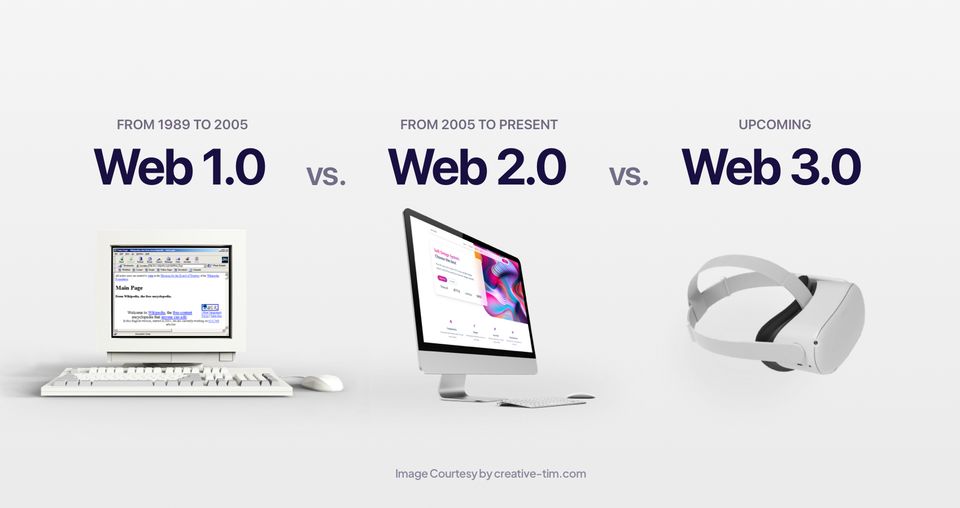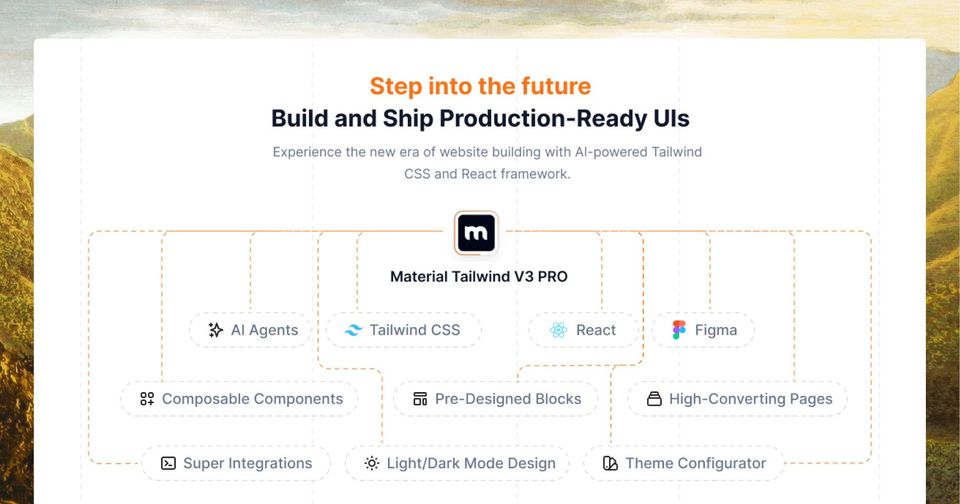With the discussion around Web 3.0 gaining a lot of momentum in the current web scenario, most people often get confused as to what Web 3.0 is, and how it compares to the previous versions of the web.
The internet, often synonymously called the web, has undergone a huge number of transitions since it was introduced back in 1980. The period between 1989 to 2005 saw the conception and evolution of the read-only web or Web 1. With it as a base, social media and collaboration between creators and users came about around 1999, giving rise to Web 2.0, or the web as we see it today.
Since 2006, we have seen new technologies dominating the web world, giving rise to a new, and somewhat loosely defined Web 3.0, which is touted to be the future of the web.
In this article, we will analyze what each type of Web involves with strengths and weaknesses, and how they compare with each other. This way we create a better image of what Web 3.0 represents.
Web 1.0

In simple layman's terms, Web 1.0 is all about reading and finding information. Web 1.0 is the earliest form of the internet created by Tim Berners Lee in 1989.
Tim conceptualized a simple project that allows one page in a directory to reference other pages in the same system by making the use of hyperlinks. The idea not only gained momentum, but also gave rise to a huge flurry of new browsers, protocols, and technologies that started an era of information sharing.
Web 1.0 is the generation of the web that existed between the years of 1991 to 2005. It is an era where content creators were fewer in number and the wide majority instead were consumers of data. Users were allowed to view the content placed on websites but were not able to collaborate, give feedback, or add their own content to these websites. Web 1.0 made the use of static HTML and displayed content using tables and frames. Websites were mostly static and data was stored predominantly in filesystems.
Web 1.0 can be thought of as a massive digital encyclopedia that lacked interactivity. While it certainly had its strengths, it also had some weaknesses that led to the evolution of Web 2.0.
Web 1.0 strengths:
- Web 1.0 was the inception of the World Wide Web (WWW) and the web as we see it today was built on top of it.
- Web 1.0 provided single access, so no one except the creator would be able to add content. Hence, Web 1 did not allow malicious content to be uploaded without permission from the creator.
Web 1.0 weaknesses:
- Web 1.0 was a linear technology that only allowed one-way communication from the creator to the user.
- Web 1.0 was simply an information portal with no interactivity and participation from users.
🤖 Improve you Web 3.0 project with an AI Chatbot trained on your website data!
Web 2.0

Web 2.0 emerged due to the drawback of Web 1.0 which allowed limited communication between content creators and users. Web 2.0 is also known as the read-write web or the social web. It came about with the introduction of social media networking websites like Twitter, Facebook, and Instagram but grew to provide a much richer user experience to users. The internet as we see now is in the Web 2.0 phase and is slowly transitioning to Web 3.0.
Web 2 websites allow users to provide feedback to content producers, and also create their own content. Users cannot just provide data and feedback, but can also control the data they see on Web 2.0 websites. Web 2.0 is also the era that saw the rise of Software as a Service (SaaS) solutions and the use of technologies like HTML5, CSS3, and JavaScript frameworks.
Instead of static websites that simply pushed content, Web 2.0 introduced the concept of blogging, and zooming, scrolling, and manipulating content such as in Google Maps. The early 2000s saw Web 2.0 becoming even more popular, thus changing the way the web looked.
While Web 2.0 did have its advantages over Web 1.0, it still suffers from some drawbacks.
Web 2 strengths:
- Free information searching and sorting.
- Usage of developed APIs that can be used by users themselves.
- Dynamic content.
- Increased social use of content that allows people to participate in discussions, share data with friends and family, and stay in touch with people all around the world.
- Ease of information sharing.
- Huge variety of information in a single click.
Web 2 weaknesses:
- Risk of virus, fraud, and spam attacks.
- Risk of getting wrong information since the variety, veracity, and volume of information is too large.
- Compromised security since Web 2 users are at the mercy of the Big Tech companies (Alphabet (Google), Amazon, Meta (Facebook), Apple, and Microsoft) which store almost all their data.
- Information censoring by the Big Tech companies who can censor the information users are trying to access.
- Economic benefits are only limited to the Big Tech companies even though the content being introduced in the WWW is generated mainly by users.
- A centralized financial system whereby the financial system is centrally managed by a few central banks and financial institutions that have access to users' data.
Check out our comprehensive research on the top blockchains for 2023!
Web 3.0
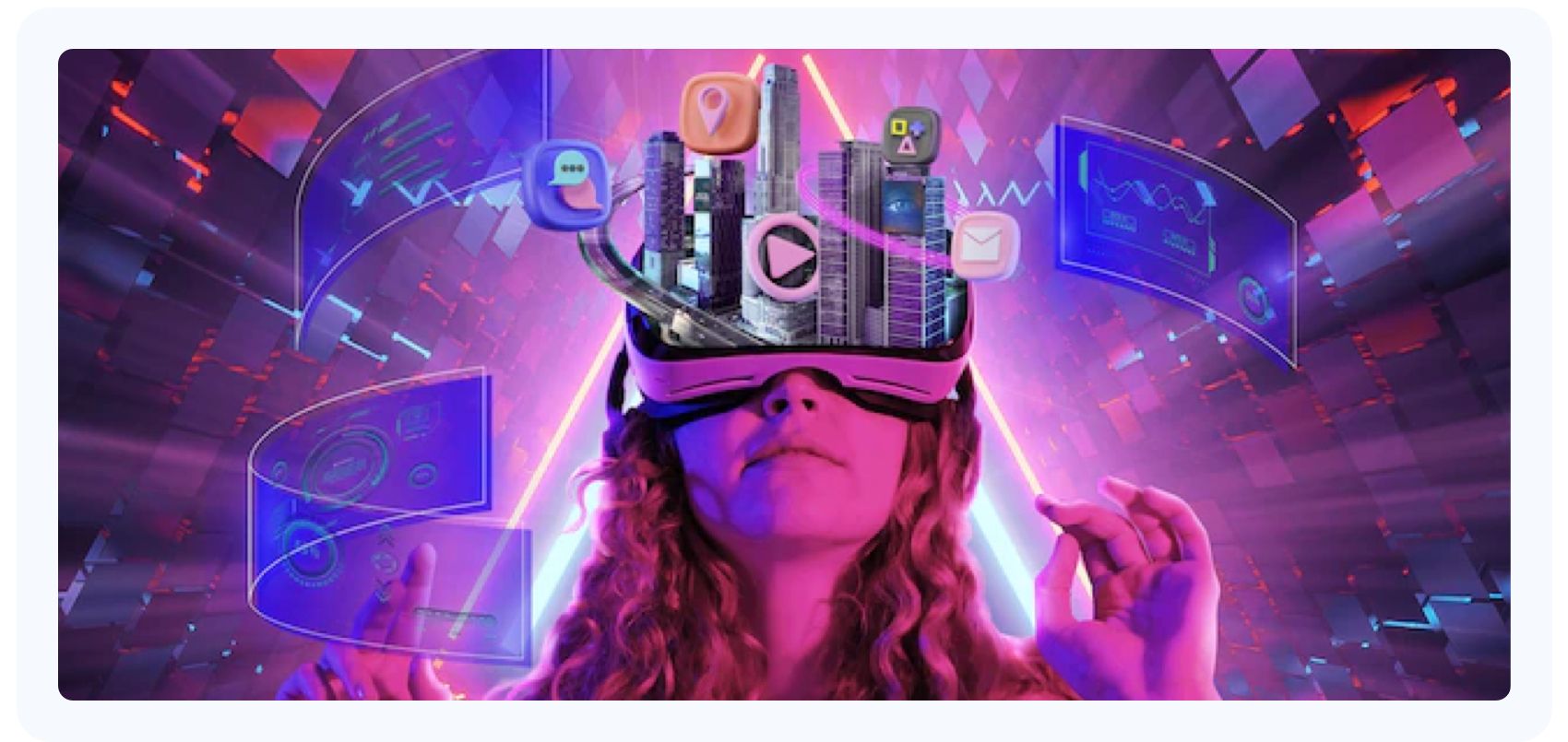
The dependence of Web 2.0 on the Big Tech companies is not acceptable to general users, and is thus revolutionizing how people use the web. This is giving rise to a new era of the WWW called the Web 3.0. Web 3.0 is also known as the read-write-execute web and introduces the concept of machine learning, artificial intelligence, and blockchain systems.
Resource: What is Web 3.0? Everything explained
Web 3.0 introduces the concept of decentralization in everything it does. It is the concept that believes that content and data must be owned and controlled by decentralized autonomous bodies, thus reducing the censorship and centralized control exercised by the Big Tech companies. Payments in Web 3.0 use token-based authentication, thus personal data does not need to be shared with third-party intermediaries. Once smart contracts are deployed, they execute as written without the need for an intermediary.
Cryptocurrencies and tokens are not just transforming finance and money, but also the ways in which creators can form Internet-native organizations to create and share value.
The pillars of Web 3.0 are:
- Artificial Intelligence and Machine Learning: Web 3.0 is based on Natural Language Processing (NLP) which allows the web to analyze and derive the meaning of spoken and written words. Spell check, spam filtering, and auto-complete are based on NLP.
- Decentralization and blockchain: Blockchain technology, in simple terms is a chain of blocks where each block contains an irreplaceable cryptographic hash, timestamp, and transaction data of the previous block. Using this technology strewn across decentralized entities that run on peer-to-peer (P2P) protocols is a characteristic of Web 3.0.
- Ubiquity: Web 3.0 envisions that systems are available anywhere and everywhere because of the use of decentralized servers, thus reducing the dependency on Big Tech that exists with Web 2.0.
- 3D graphics and spatial web: Web 3.0 is also set to transition from 2D to 3D systems coupled with NLP and machine learning. Web 3.0 will see the merging of reality with virtual worlds using sensors, smart glasses, and AR/VR technologies.
Web 3.0 strengths:
- Since information can be accessed from all ends of the web spectrum, it makes data interoperable across different platforms and IoT devices.
- Use of permissionless blockchains thus reducing limitations that exist due to wealth, geographic location, gender, or other demographics.
- Removal of a central authority leading to self-governance and distributed ownership.
- Improved security because of the distribution, decentralization, and use of blockchain technologies.
- Reduced dependence on the Big Tech companies.
- No need to share personal information with third parties when making payments.
Web 3 weaknesses:
- Since Web 3.0 is a technology of the future, not all gadgets will be able to operate with it.
- Newcomers might find it difficult to comprehend.
- Since security and ownership are decentralized, it might require a lot of law changes.
- Regulation of Web 3.0 will be more difficult in the absence of the Big Tech companies or central entities.
- Since Web 3.0 is a neural network, accessing one’s personal and political data becomes easier.
NF-Tim by Creative Tim - The First Project on the BHero Accelerator Program
Features Comparison
The table below illustrates the differences between Web 1.0, Web 2.0, and Web 3.0.
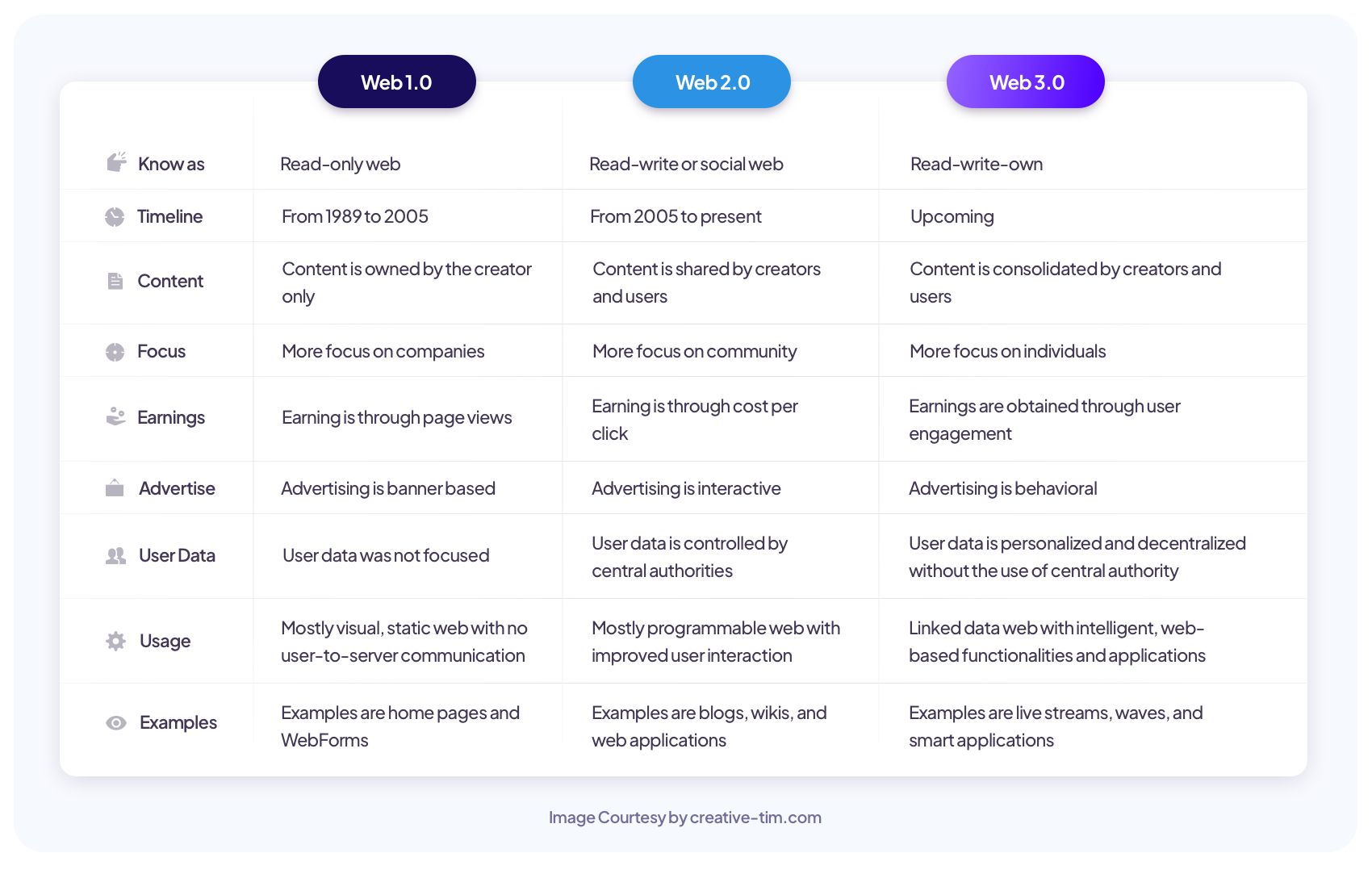
Technologies, Services, and Apps Comparison
The table below illustrates the technologies, services, and apps of Web 1.0, Web 2.0, and Web 3.0. In 33 years, the Web has evolved from simple search engines to personal data assistants
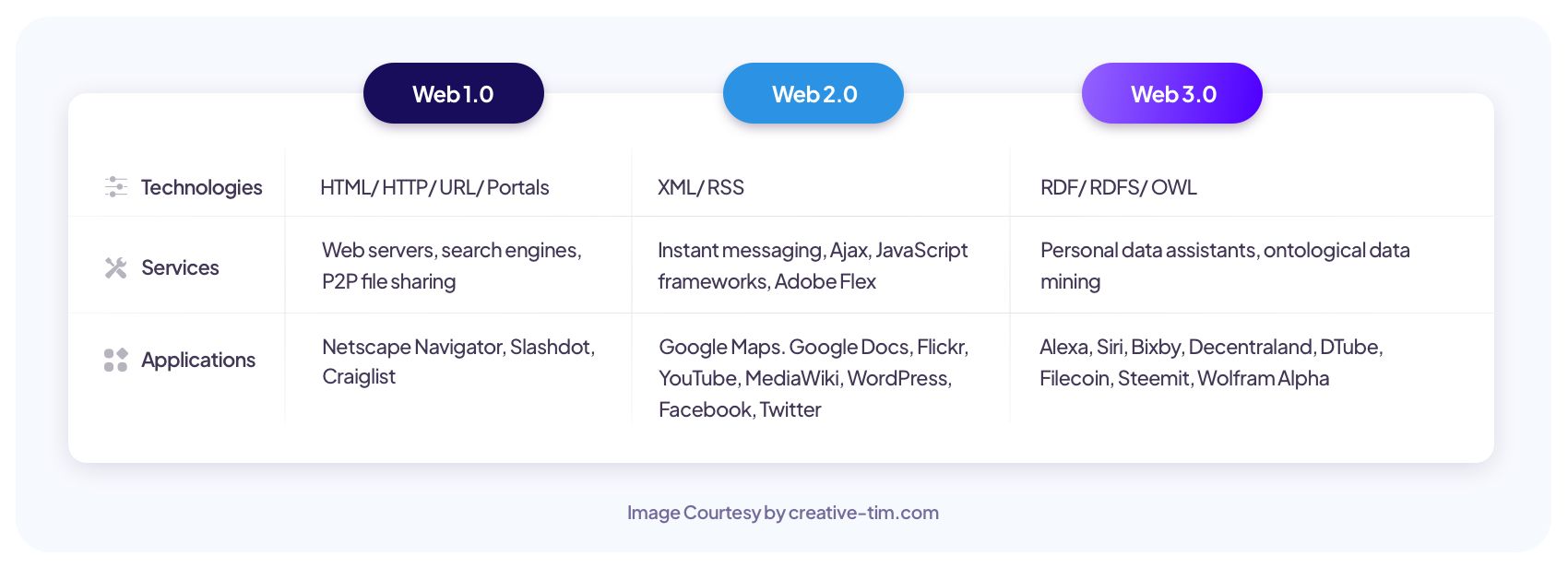
The web as we know it has evolved through a range of technologies, concepts, and ideas to what it is today. Needless to state, the evolution is not going to stop, and new ideologies are going to be introduced every single day to make life easier and more interesting.
Resource: 25 Essential Web 3.0 Terms You Need to Know to Understand It
Conclusion
While Web 1.0 was simply a read-only web with unidirectional flow of information, the advent of Web 2.0 saw increased social collaboration between content creators and users. Web 2.0 has seen the rise of a huge number of content creators, almost impossible to count. With the volume, variety, and velocity of Web 2.0 data so high, and the control of this data centralized to the Big Tech, it is almost impossible to discern real data from sponsored and censored data.
These concerns of centralized finances, dependence on the Big Tech, and the need to share personal information with intermediaries have created a wave of new ideologies and thinking, navigating the world towards the advent of Web 3.0 technology.
Web 2 has never really gone away, and Web 3.0 has never really completely overtaken the WWW, however, the differences between the two technologies are not subtle enough to ignore. While those in favor of Web 3.0 call it the future of the web, some skeptics do not consider it to be a viable direction for the web.
Whichever direction the evolution of the web goes, it is impossible to completely disregard the fact that the pillars of artificial intelligence, virtual reality, and the use of blockchain are growing at an exponential rate. The question of if the combination of these technologies is certainly set to give rise to a well-defined Web 3.0 technology, is something that can only be answered in the future.
References
We thank the authors of the following articles for offering high-quality information that inspired our article:
- https://www.creative-tim.com/blog/web-3-0/what-is-web-3-0-everything-explained/
- https://www.creative-tim.com/blog/educational-tech/what-is-blockchain-technology-and-how-does-it-work/
- https://firstmonday.org/article/view/2125/1972
- https://www.geeksforgeeks.org/web-1-0-web-2-0-and-web-3-0-with-their-difference/
- https://history-computer.com/web-1-0-vs-web-2-0-vs-web-3-0/
- https://simplecryptoguide.com/what-is-web-3
- https://www.forbes.com/sites/bernardmarr/2022/05/10/the-internet-of-the-future-here-are-best-examples-of-web3-in-practice/
- https://www.thedrum.com/opinion/2022/02/09/what-web3-and-why-does-it-matter
- https://en.wikipedia.org/wiki/Web_2.0#Web_1.0
- https://www.techtarget.com/whatis/feature/Web-20-vs-Web-30-Whats-the-difference
- https://www.simplilearn.com/what-is-web-1-0-web-2-0-and-web-3-0-with-their-difference-article
- https://www.martechalliance.com/stories/whats-the-difference-between-web-1.0-web-2.0-and-web-3.0

